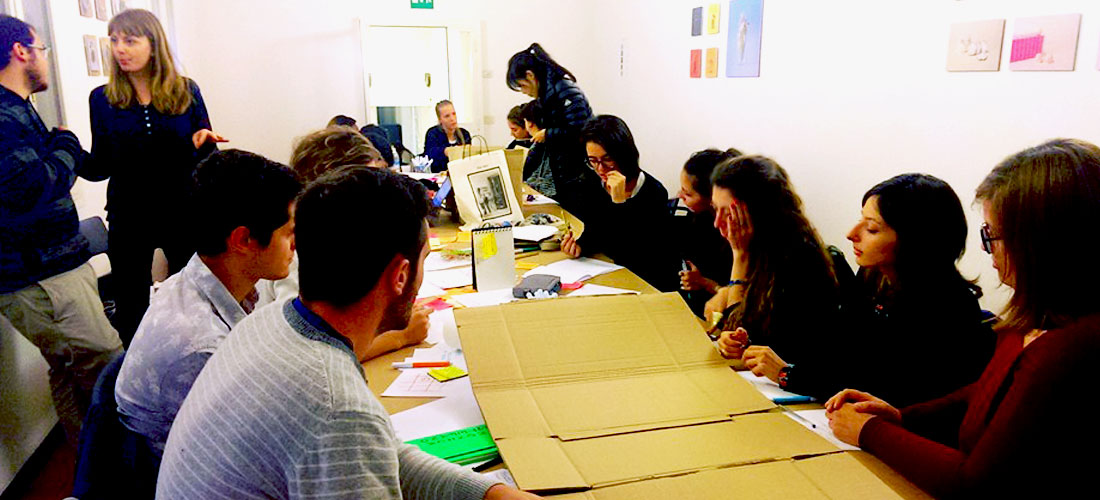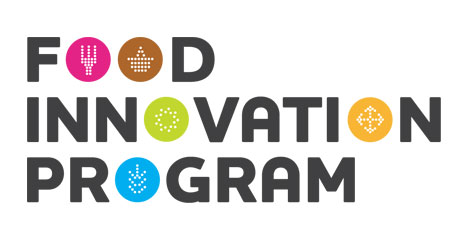
From the 30th of September until the 3rd of October, Bologna Design Week presented a full schedule of creative and cultural encounters that brought the cities artists, designers and innovators out of their workshops and thrust them onto the public stage. Over 150 events took place in Galleria Cavour, Campogrande Concept, Corte Isolani and Atelier Corradi.
The Food Innovation Program also had an opportunity to take the stage with a specially devised design-thinking workshop at Corte Isolani. “Put succinctly design thinking is a methodological human-centered approach that aims to collaboratively solve complex challenges across any sector. It uses tools that have always been part of a designer’s vocabulary, (such as brainstorming and prototyping) and combines new methods borrowed from the world of social sciences (such as ethnography) and business. Together these help designers and non-designers, work collaboratively to understand, reframe and discover innovative solutions to problems that scale from product and service, to organizational or societal,” says strategic designer and Food Innovation Program mentor Antonio Starnino.
As the mediator of the event, Starnino spent the first half an hour getting participants, who were mostly product design students from the University of Bologna, up to speed with the method. “The rest of the time was dedicated to getting people into groups based off the four challenges put forth by the FIP students,” he says. “The FIP representatives in each group acted as mini coaches guiding their teams through each activity. These activities were roughly organized into a research phase where the participants were encouraged to ‘interview’ their FIP coaches to gain more insight into the challenge. Then we had an ideation phase where they were encouraged to brainstorm a ‘how might we’ question that was then used as a basis to brainstorm possible solutions to the initial challenge. The last phase was a prototyping phase where all groups were encouraged to choose one idea and create three different prototypes that represented that idea,” says Starnino.
“Kelly Angela Lee, Benedicte Mundele Kuvuna, Chiara Cecchini, Mercy Chatyoka and myself were the coaches for the day,” says FIP student Alice Bennetts. “I was given the group that was more comfortable speaking English. It began with introducing ourselves and our backgrounds and expertise. Then a 15 min interview with me on the project in general where I showed them photos of our process,” she says.
The premise for the challenge was as follows: 29 million people die every year as a result of obesity. The rapid rise in childhood obesity is particularly alarming. In Italy it is estimated that 1.1 million children between 6 and 11 years have obesity or are overweight: that is 1 in 3 children. This is the first time in history in which the life expectancy of a new generation is lower than that of the previous generation. Now is the time to do something. It is important to encourage children to have healthy, active lifestyles and teach them and their parents how to make healthy food choices.
“The challenge was to create a healthy product for children between 4 and 11 years old to consume as a snack. The product had to be 200kcal or less, and it had to provide the child with a sensation of having prepared/cooked the product themselves or provide the child with a sensation of both eating and playing,” says Chiara Cecchini.
The main idea was to teach the participants about “design thinking in general and to not be afraid of what they perceived as silly ideas. To think outside of the box,” says Bennetts. “They really liked the KIDS Barilla team challenge that we are working on. They gave me a lot of suggestions. They seemed to love the workshop and were really appreciative and sweet.” Cecchini adds, “They were pretty interested. I think they liked the approach and they really appreciated the food dimension we tried to put them into!”
The design thinking approach came into being at Standford University in the 1980’s when mechanical engineering professor Rolfe Faste began to expand on Robert McKim’s (author of Experiences in Visual Thinking) earlier ideas in his classes, and used the approach as a method for creative action in the Stanford Design Program. Design thinking was adapted for business purposes by Faste’s Stanford colleague David M. Kelley, who founded IDEO (pronounced “eye-dee-oh”) – an international design and innovation consulting firm in 1991.
IDEO describes design thinking “as the ‘third way’ between an overly analytical approach that can sometimes be found in very corporate structures, and an approach that relies too heavily on intuition (that can be found in design agencies typically run by “rock-star” designers),” says Starnino. “It always calls for disrupting, innovative ideas to emerge but grounds them in the reality of the context, making it desirable for the people that will use the idea, feasible for the people that will have to make this idea real, and viable for the organization that will have to sustain this idea”.
When asked if the event was a success, it seemed to be a win-win all round. Starnino comments, “I think the FIP students got a taste of being a design thinking coach, which from the texts I got afterward, was a lot of fun for them! And the participants came up with new insights and ideas that can now be used on advancing the challenges.”
Cecchini confirms, “Personally I think coaching is fundamental to really learn the approach – I learned much more in these three hours than in other sessions where I was simply a participant.” Although “the time was a little constrained,” notes Bennetts, “it was enough to spark interest on the design thinking process and to introduce the method. For me it did a lot for my confidence. I knew a lot more than I thought I did and enjoyed being a team leader.”
Today, as innovation’s terrain expands to encompass more human-centered processes and services as well as products, the design thinking approach will become increasingly important. FIP looks forward to continue workshopping and promoting this method at the next edition of Bologna Design Week and elsewhere.
© 2015 Food Innovation Master Degree | © 2014 FUTURE FOOD INSTITUTE
